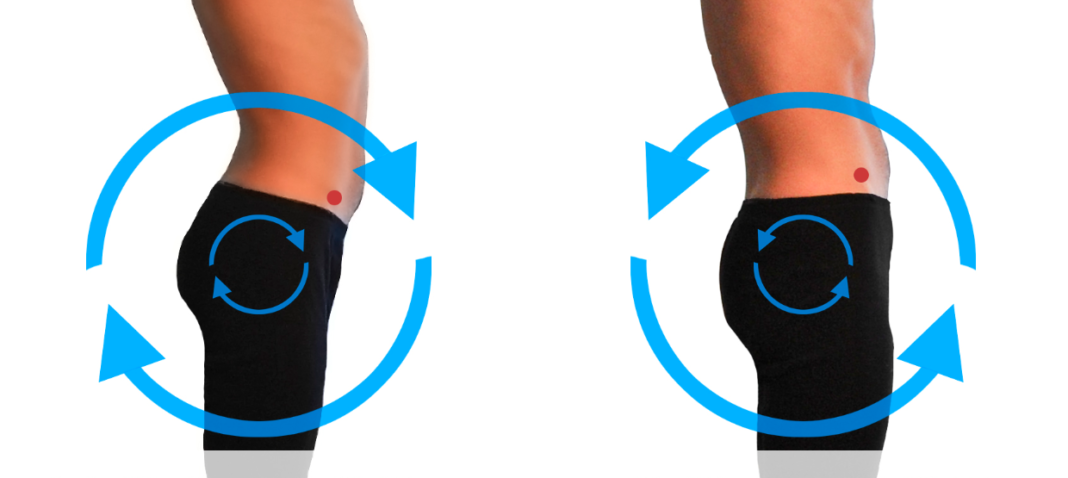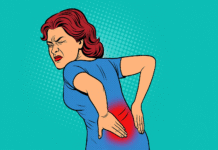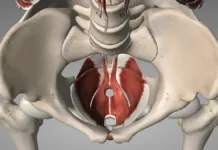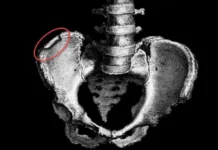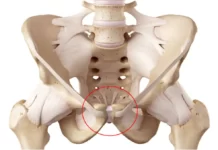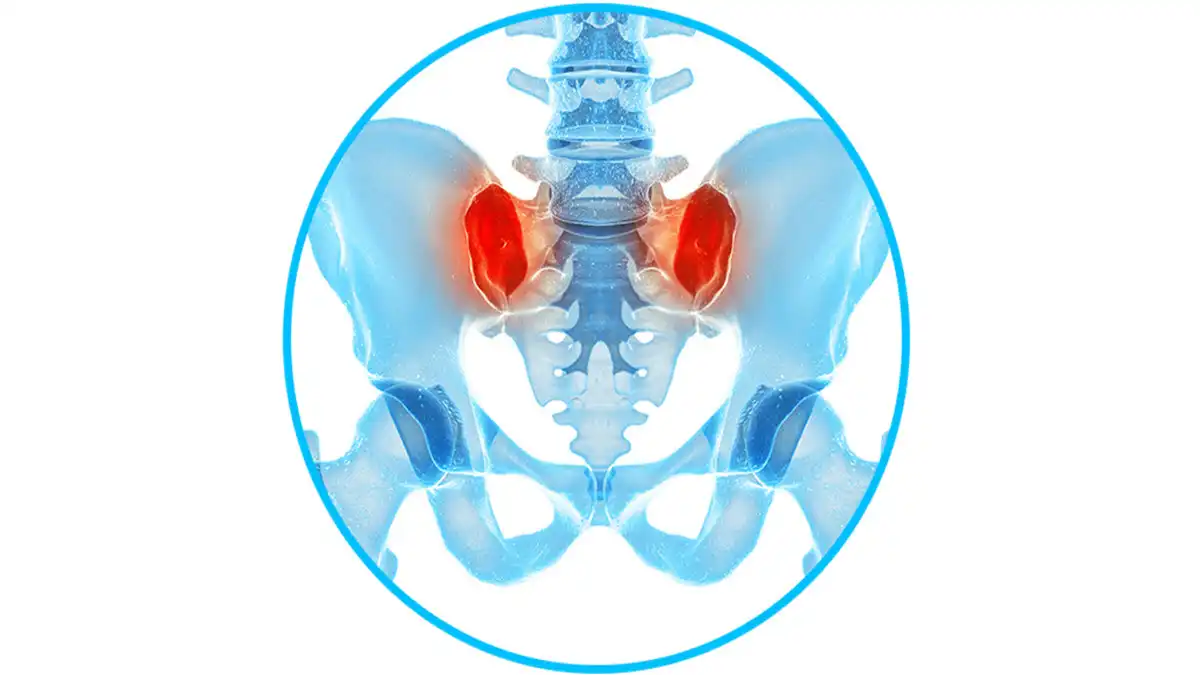Introduction to Pelvic Tilt: A Biomechanical Foundation
Pelvic tilt, a fundamental component of human biomechanics, plays a pivotal role in posture, movement, and overall musculoskeletal health. As a dynamic hinge between the spine and lower limbs, the pelvis acts as a bridge that distributes forces and supports functional activities such as walking, sitting, and standing. However, when pelvic tilt becomes imbalanced—whether excessively anterior or posterior—it can disrupt the body’s alignment, leading to a cascade of musculoskeletal issues, pain, and functional impairments.
The pelvis can tilt in two primary directions: anterior and posterior. An anterior pelvic tilt, characterized by a forward rotation of the pelvis, increases the lumbar spine’s natural lordotic curve. This movement shifts the body’s center of gravity forward, placing additional stress on the lumbar vertebrae and associated structures. In contrast, a posterior pelvic tilt involves the backward rotation of the pelvis, flattening the lumbar curve and often transferring excessive strain to the sacroiliac joints and posterior musculature. Both types of pelvic tilts are normal to an extent, as they facilitate movements and postural adjustments. However, when one tilt becomes exaggerated or persistent, it can result in compensatory patterns that affect the entire musculoskeletal system.
Understanding pelvic tilt is essential for clinicians, therapists, and individuals aiming to maintain optimal posture and prevent musculoskeletal disorders. An imbalance in pelvic tilt can lead to conditions such as hyperlordosis, kyphosis, and chronic lower back pain, underscoring the importance of identifying and addressing these issues early. Additionally, pelvic tilt directly influences the functioning of stabilizing muscles, including the hip flexors, lumbar extensors, abdominals, and gluteal muscles, which collectively work to maintain the pelvis’s alignment and stability during movement.
Evaluation of pelvic tilt involves a multifaceted approach, including clinical observation, postural analysis, and biomechanical testing. These methods allow healthcare professionals to detect deviations and understand how pelvic alignment contributes to broader movement patterns. Moreover, advancements in imaging and motion analysis technology have enhanced the ability to diagnose and address imbalances effectively. Recognizing these imbalances is not only crucial for treating pain and dysfunction but also for preventing future injuries and ensuring long-term health.
In addition to clinical assessments, interventions targeting pelvic tilt have gained prominence in therapeutic and ergonomic practices. Corrective exercises aimed at strengthening and stretching specific muscle groups have proven effective in restoring balance and reducing pain. Ergonomic strategies, such as maintaining proper posture during sitting and standing or using lumbar supports, further emphasize the importance of everyday habits in promoting pelvic alignment. When combined with targeted interventions, these strategies create a holistic approach to managing pelvic tilt and its associated complications.
This article delves into the complexities of pelvic tilt, exploring its biomechanical implications, its role in posture and movement, and its potential to contribute to musculoskeletal disorders. From clinical evaluations and corrective exercises to therapeutic and ergonomic recommendations, the text aims to provide a comprehensive understanding of pelvic tilt and its impact on overall health. By examining these aspects, the discussion highlights the importance of maintaining a balanced pelvic alignment, not only for alleviating current issues but also for preventing long-term complications.
Ultimately, pelvic tilt serves as a window into the interconnected nature of the body’s musculoskeletal system. Addressing its imbalances requires a holistic understanding of biomechanics, posture, and movement. This text aims to equip readers with the knowledge and tools needed to identify, manage, and prevent the consequences of pelvic tilt imbalances, paving the way for better posture, improved function, and enhanced quality of life.
Pelvic tilt
The pelvic tilt, an essential movement in the functioning of the pelvis, plays a crucial role in maintaining balance and body posture. It is divided into two distinct types: the anterior pelvic tilt and the posterior pelvic tilt.
Anterior pelvic tilt, also called forward flexion rotation, is characterized by a short arc of the pelvis around the hip joints. In this movement, the trunk is kept straight and stationary, allowing the pelvis to move naturally. This forward rotation results in an extension of the lumbar spine, thus promoting an increase in lumbar lordosis. Lumbar lordosis is the natural curvature of the lower spine, and its optimal maintenance is crucial for a healthy and balanced posture.
Conversely, posterior pelvic tilt, characterized by backward extension rotation, involves a short arc of the pelvis that flexes the lumbar spine. In this movement, the pelvis tilts backwards, thus reducing lumbar lordosis. The lumbar spine, which naturally has a concave forward curvature, undergoes flexion due to this backward rotation. This results in a decrease in lumbar curvature, which can have implications for posture and body stability.
These two types of pelvic tilts are crucial in the dynamics of daily body movement. Anterior pelvic tilt frequently occurs during movements such as walking, running and even simple standing. It helps maintain body balance while promoting a stable vertical posture. On the other hand, the posterior pelvic tilt is often used during movements such as leaning backwards, flexion or during prolonged sitting.
The importance of understanding these pelvic movements lies in their influence on overall spinal health and the prevention of musculoskeletal disorders. An imbalance in the pelvic tilt can lead to muscle tension, lower back pain and long-term postural problems. Thus, proper awareness and maintenance of these pelvic movements is essential for promoting healthy posture, preventing injuries, and maintaining optimal functionality of the body on a daily basis.
Anterior pelvic tilt is a short arc forward flexion rotation of the pelvis around the hip joints, with the trunk held straight and stationary, naturally extends the lumbar spine and increases lumbar lordosis.
Posterior pelvic tilt is a short-arc backward extension rotation of the pelvis that flexes the lumbar spine and therefore decreases lumbar lordosis.
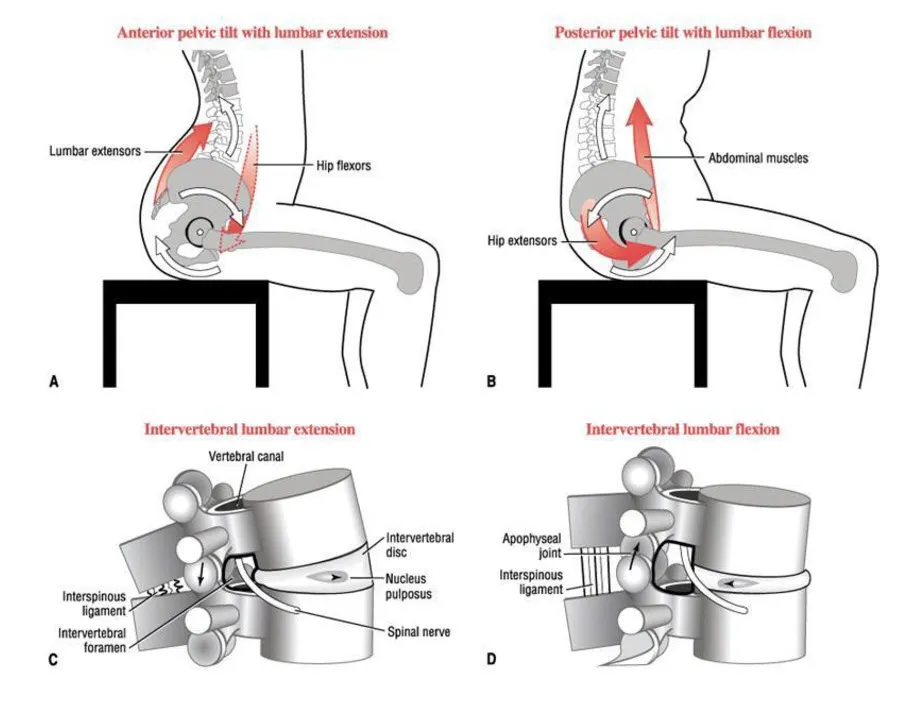
This image illustrates the biomechanical relationships between pelvic tilt and lumbar spine movement, with corresponding effects on intervertebral structures:
Anterior Pelvic Tilt with Lumbar Extension (A):
The pelvis tilts forward, increasing lumbar lordosis (extension).
Hip flexors and lumbar extensors are activated, contributing to spinal compression and increased stress on the posterior intervertebral joints.
Posterior Pelvic Tilt with Lumbar Flexion (B):
The pelvis tilts backward, reducing lumbar lordosis (flexion).
Hip extensors and abdominal muscles are engaged, promoting spinal elongation and reducing posterior joint stress.
Intervertebral Lumbar Extension (C):
Lumbar extension compresses the posterior intervertebral elements, narrowing the intervertebral foramen and stressing structures like the interspinous ligament and facet joints.
Intervertebral Lumbar Flexion (D):
Lumbar flexion opens the intervertebral foramen, relieving compression on spinal nerves but increasing stress on the anterior intervertebral disc and stretching the posterior ligamentous structures.
This diagram highlights how pelvic tilt and lumbar mechanics are interconnected, emphasizing. According to Neumann DA: Kinesiology of the musculoskeletal system: foundations of physical rehabilitation, ed 2, St Louis, 2010, Mosby, Fig. 9.63.
Impact of Pelvic Tilt on Stabilizing Muscles and Muscular Chains
Pelvic tilts, whether anterior or posterior, have a direct impact on the stabilizing muscles of the pelvis and the muscular chains associated with them. These movements influence the activity of key muscle groups, including the hip flexors, lumbar extensors, abdominals, and glutes, playing a critical role in maintaining posture, coordinating movement, and preventing injuries.
Anterior Pelvic Tilt and Its Muscular Implications
During an anterior pelvic tilt, the pelvis rotates forward, leading to an extension of the lumbar spine and an increase in lumbar lordosis. This movement engages several muscle groups:
- Hip flexors: Muscles like the iliopsoas and rectus femoris are heavily activated to maintain the forward tilt. Hyperactivity in these muscles can cause tension in the lower back.
- Lumbar extensors: The spinal erectors (e.g., longissimus and iliocostalis) are also overworked to stabilize the extended lumbar spine, potentially contributing to chronic lower back pain.
- Weak abdominals: Excessive anterior tilt is often linked to weakness in the deep abdominal muscles, particularly the transverse abdominis, reducing their ability to stabilize the pelvis and spine.
- Inactive glutes: The gluteal muscles, primarily the gluteus maximus, are often underutilized, decreasing their role in pelvic stabilization.
Posterior Pelvic Tilt and Its Muscular Implications
In a posterior pelvic tilt, the pelvis rotates backward, leading to a flexion of the lumbar spine and a reduction in lumbar lordosis. This movement involves different muscle groups:
- Hip extensors: The glutes, especially the gluteus maximus, are highly activated to control this tilt. Prolonged activation can lead to muscle fatigue.
- Contracted abdominals: The abdominal muscles, particularly the rectus abdominis, play a significant role in pulling the pelvis upward, promoting lumbar flexion. However, hyperactivity in these muscles may lead to postural imbalances.
- Inhibited hip flexors: Unlike in anterior tilt, the hip flexors are relaxed, which may reduce functional mobility if this posture is sustained.
Muscular Chains and Imbalances
Excessive or prolonged pelvic tilts can lead to muscular imbalances within the anterior and posterior chains:
- An anterior tilt tends to shorten the hip flexors and lumbar extensors while weakening the abdominals and glutes.
- A posterior tilt can cause overuse of the glutes and abdominals, while the hip flexors become underutilized.
The Role of Pelvic Tilt in Human Movement and Its Importance in Posture and Global Balance
Pelvic tilt plays a fundamental role in human movement and in maintaining posture and overall body balance. Located at the intersection between the trunk and lower limbs, the pelvic region acts as a pivotal structure for movements of the spine, hips, and legs. Proper control of pelvic tilt is essential for maintaining correct posture, ensuring an even distribution of loads, and optimizing functional performance.
Pelvic Tilt in Human Movement
The pelvis is a key component of the musculoskeletal system, connecting the spine to the lower limbs via the sacroiliac joints and the hips. Anterior pelvic tilt and posterior pelvic tilt allow the pelvis to adapt to the demands of various activities, such as walking, running, or flexion and extension movements.
- Anterior tilt: This movement is crucial for actions like running or jumping. It creates an extension of the lumbar spine, increasing lumbar lordosis and enhancing hip mobility. For example, during propulsion in running, anterior tilt maximizes the power of the hip flexors and the leg extensors.
- Posterior tilt: This movement is essential in positions such as prolonged sitting or trunk flexion. It reduces lumbar lordosis, alleviating stress on the intervertebral joints and lumbar discs.
The synchronization of these tilts is vital to ensure proper coordination between body segments, particularly during transitions between static and dynamic positions.
Importance in Posture and Global Balance
Human posture relies on an optimal alignment of the spine, pelvis, and lower limbs. A balanced pelvic tilt helps maintain this alignment and reduces unnecessary muscular tension.
- Standing posture: A neutral pelvic position ensures an even distribution of loads on the lumbar spine, hips, and legs, preventing lower back pain and postural imbalances.
- Sitting posture: Correct pelvic tilt while sitting promotes a neutral spinal alignment, reducing the risk of intervertebral disc compression.
- Global balance: Acting as the body’s center of gravity, the pelvis regulates balance during complex movements, such as walking or sports. Excessive tilt (anterior or posterior) can disrupt this balance, leading to muscular compensations and an increased risk of injury.
Thus, pelvic tilt is not merely a mechanical motion—it is a key component of human movement, influencing posture, balance, and overall functional performance. Maintaining a balanced pelvic tilt is therefore crucial for musculoskeletal health and the prevention of postural disorders.
Pathologies Related to Pelvic Tilt Imbalances
An imbalance in pelvic tilt can lead to numerous musculoskeletal pathologies that affect not only the spine but also the hips, knees, and even the lower limbs. These imbalances, whether from excessive anterior or posterior pelvic tilt, are often the root causes of chronic pain, postural dysfunctions, and biomechanical disorders.
Hyperlordosis and Associated Pain
An excessive anterior pelvic tilt causes an exaggerated lumbar lordosis, known as hyperlordosis. This excessive curvature has several consequences:
- Chronic lower back pain: Hyperlordosis increases pressure on the facet joints of the lumbar spine, causing irritation and chronic inflammation.
- Nerve compression: Increased lordosis reduces the space within the intervertebral foramina, compressing nerve roots and leading to symptoms like radiating leg pain (radiculopathy).
- Muscle tension: Lumbar extensors (e.g., longissimus, iliocostalis) and hip flexors (e.g., iliopsoas) are constantly overactivated, leading to painful muscle tightness and spasms.
Lumbar Kyphosis and Its Complications
An excessive posterior pelvic tilt has the opposite effect, leading to a loss of lumbar lordosis and the development of lumbar kyphosis. This condition manifests as an exaggerated flexion of the lumbar spine and is associated with specific pathologies:
- Disc problems: Kyphosis increases pressure on the anterior portion of the intervertebral discs, making them prone to posterior disc herniations.
- Musculoskeletal pain: The flexed pelvis position overloads the abdominal muscles and hip extensors (e.g., gluteus maximus), causing muscle fatigue and pain.
- Postural alterations: Lumbar kyphosis often results in rounded shoulders and overall body misalignment, leading to uneven weight distribution across joints.
Chronic Lower Back Pain and Muscular Imbalances
Pelvic tilt imbalances, whether anterior or posterior, are a common cause of chronic lower back pain. These imbalances create unequal tension between opposing muscle groups:
- Weak abdominals and underactive glutes in anterior tilt.
- Overactive abdominals and weak hip flexors in posterior tilt.
These tensions disrupt pelvic alignment and increase the mechanical load on supporting structures, such as intervertebral discs and lumbar ligaments.
Functional and Biomechanical Disorders
Prolonged pelvic tilt imbalance can also affect the lower limbs and hips:
- Patellofemoral pain syndrome: An anterior tilt increases tension on the quadriceps, disrupting patellar alignment and causing knee pain.
- Hip tendinopathies: An imbalanced pelvic tilt overloads the tendons of the gluteal and hip flexor muscles, leading to chronic pain and inflammation.
Impact on Global Mobility
Finally, a pelvic tilt imbalance alters gait patterns and overall mobility. For instance, a posterior tilt reduces hip range of motion, limiting propulsion efficiency during walking or running. In contrast, an anterior tilt can create lumbar hyperextension, affecting balance and increasing the risk of falls.exion
- Migration of the nucleus pulposus backwards, towards the neural tissue
- Increased conjugation gap
- Transfers the load from the apophyseal joints to the intervertebral discs
- Increases tension in the posterior connective tissues (ligament flava, apophyseal joint capsules, interspinous and supraspinous ligaments, posterior longitudinal ligament) and the posterior margin of the annulus fibrosus
- Compresses the anterior surface of the annulus fibrosus
Clinical Evaluation of Pelvic Tilt
The clinical evaluation of pelvic tilt is a crucial step in identifying postural imbalances and their effects on the body. It helps determine whether excessive or insufficient pelvic tilt (anterior or posterior) impacts posture, musculoskeletal pain, or functional performance. A comprehensive evaluation relies on observation, clinical tests, and biomechanical analysis.
Postural Observation
Postural observation is the initial step in assessing the alignment of the pelvis and the spine. It can be performed in standing or seated positions:
- Lateral view (profile): This perspective identifies anterior tilt (increased lumbar lordosis) or posterior tilt (reduced or reversed lumbar lordosis). It evaluates the relationship between the spine, pelvis, and lower limbs.
- Anatomical landmarks: The evaluation focuses on the alignment of landmarks such as the anterior superior iliac spine (ASIS) and posterior superior iliac spine (PSIS). In a neutral position, these landmarks should be roughly aligned in the horizontal plane.
- Asymmetries: Visible imbalances, such as one hip being higher or a lateral pelvic tilt, may indicate global postural issues.
Specific Clinical Tests
Clinical tests help confirm visual observations and provide insight into underlying mechanisms:
- Thomas Test: This test evaluates the length of the hip flexors (iliopsoas) and their impact on anterior pelvic tilt. In a supine position, if the patient’s leg does not rest flat on the table, it suggests excessive tension in the hip flexors.
- Lumbar Extension Test: The patient is asked to extend the lumbar spine to observe if hyperlordosis is accentuated, indicating an anterior pelvic tilt.
- Ober Test: This test measures the flexibility of the tensor fasciae latae and iliotibial band. Excessive tightness can influence pelvic stability.
- Active Pelvic Tilt Test: The patient is asked to perform pelvic tilts in a standing or supine position to assess mobility and motor control.
Biomechanical Analysis
For a more in-depth assessment, biomechanical analysis is essential. It may include:
- Functional evaluation: Functional movements, such as walking, squatting, or stair climbing, allow observation of how the pelvis moves and aligns during daily activities.
- 3D imaging or video analysis: Motion capture tools and biomechanical software provide detailed insights into pelvic angles and interactions with other body segments.
- Podiatry evaluation: Analyzing weight distribution under the feet can indicate imbalances in pelvic alignment.
Manual Palpation and Tactile Assessment
A physical therapist or osteopath often uses palpation to evaluate the position of bony landmarks (ASIS, PSIS) and detect muscle tension in the hip flexors, glutes, or lumbar extensors.
Interpretation and Diagnosis
The gathered data must be interpreted in a broader context:
- Link to symptoms: Excessive anterior or posterior tilt often correlates with lower back pain, muscle tension, or functional issues.
- Aggravating factors: The evaluation also identifies postural habits or activities contributing to imbalances.
Therapeutic prescription
Posterior pelvic tilt : A patient with stenosis (narrowing) of the intervertebral foramen will be encouraged to maintain their pelvis in a more posteriorly inclined position
- The rocker flexes the lumbar spine, widening the foramen
- Reduction of painful symptoms caused by compression with an exiting nerve root.
Anterior pelvic tilt: An individual suffering from a posterior herniated disc, on the other hand, will be encouraged to maintain their pelvis in a more forward tilted position, maintaining or increasing the lordosis of the lumbar spine.
- This posture may help prevent posterior migration of the nucleus pulposus, limiting or preventing pressure on neighboring neuronal elements.
Ergonomic Tips and Corrective Exercises for Balanced Pelvic Tilt
Maintaining a balanced pelvic tilt is essential for preventing musculoskeletal pain and promoting healthy posture in daily life. Imbalances in pelvic tilt, whether excessive anterior or posterior, can be corrected through ergonomic adjustments during everyday activities and specific exercises to strengthen stabilizing muscles and improve mobility.
Postures to Adopt or Avoid at Work and Home
In modern lifestyles, where prolonged sitting is common, paying attention to pelvic alignment is crucial. Here are some practical recommendations:
- Correct Sitting Posture:
- Adopt a neutral pelvis position: While sitting, hips and knees should be at a 90-degree angle, with feet flat on the ground. The lumbar spine should maintain its natural curve, supported by an ergonomic chair or cushion.
- Avoid excessive anterior or posterior tilt: Use a lumbar roll or an ergonomic chair to stabilize the pelvis and prevent exaggerated movements.
- Prolonged Standing Position:
- Avoid locking the knees: This promotes anterior tilt. Keep the knees slightly bent and distribute weight evenly across both legs.
- Change positions regularly: Alternating between standing and sitting reduces stress on the lumbar spine.
- Workstation Ergonomics:
- Adjust the screen and desk: Position the monitor at eye level to avoid compensating with poor spinal posture that affects the pelvis.
- Incorporate active breaks: Every hour, take a break to walk, stretch, or perform simple exercises to relax the pelvis and surrounding muscles.
- At Home:
- Sleep on a suitable surface: A mattress that is neither too soft nor too firm supports proper spinal and pelvic alignment.
- Avoid slouching: Use cushions for support when watching TV or reading to maintain an upright posture.
Corrective Exercises for Excessive Pelvic Tilt
Targeted exercises can address muscle imbalances associated with anterior or posterior pelvic tilt:
- Hip Flexor Stretches (to correct anterior tilt):
- Low Lunge Stretch:
- Kneel on one knee and step the other foot forward, bending the knee.
- Gently push the hips forward to stretch the iliopsoas.
- Hold for 30 seconds on each side.
- Quadriceps Stretch:
- Stand and pull one ankle towards your buttocks while keeping the pelvis neutral.
- Low Lunge Stretch:
- Strengthening Deep Abdominals (transverse abdominis):
- Plank:
- Lie face down, supporting yourself on elbows and toes.
- Engage the abdominals and keep the body straight for 20-30 seconds.
- Side Plank:
- Lie on one side, supporting yourself on one elbow.
- Lift your hips to align your body and hold for 20-30 seconds.
- Plank:
- Stretching Lumbar Extensors (to correct posterior tilt):
- Cat Stretch (Yoga):
- On all fours, alternate between arching and rounding the back to mobilize the spine.
- Hamstring Stretch:
- Sit with one leg extended forward and gently lean your torso toward the extended leg while keeping the spine straight.
- Cat Stretch (Yoga):
- Strengthening Gluteal Muscles:
- Bridge Exercise:
- Lie on your back with knees bent and feet flat on the floor.
- Lift your hips towards the ceiling while contracting the glutes, then lower slowly.
- Partial Squats:
- Stand and lower slightly by bending the knees, keeping the back straight.
- Bridge Exercise:
Appendix: Clinical Studies and References on Pelvic Tilt
Pelvic tilt, whether anterior or posterior, has been extensively studied for its impact on body biomechanics, musculoskeletal pain, and therapeutic interventions. This section compiles clinical studies and scientific references that support the biomechanical and therapeutic implications of pelvic tilt.
Biomechanical Impact of Pelvic Tilt
- Neumann, D. A. (2010), Kinesiology of the Musculoskeletal System: Foundations for Rehabilitation: This foundational textbook highlights the biomechanical relationships between pelvic tilt and lumbar spine movements. Neumann explains how an anterior pelvic tilt increases lumbar lordosis, placing greater stress on the facet joints, while a posterior tilt reduces lordosis, alleviating pressure on posterior structures.
- Gracovetsky, S. (1988), The Spinal Engine: Gracovetsky explores the central role of pelvic tilt in functional movements like walking. He demonstrates how poor coordination between pelvic tilt and the lumbar spine can lead to biomechanical disorders, affecting load distribution along the spine.
Studies on Low Back Pain and Pelvic Imbalances
- O’Sullivan, P. B., et al. (2002), Lumbar segmental ‘instability’: clinical presentation and specific stabilizing exercise management (Manual Therapy, 7(3), 160-175): This study links excessive anterior pelvic tilt to chronic lower back pain, often associated with hyperlordosis. The authors emphasize the importance of stabilizing exercises, particularly strengthening deep abdominal muscles, to correct these imbalances.
- Esola, M. A., et al. (1996), Analysis of trunk muscle recruitment using surface electromyography during pelvic tilt exercises (Spine, 21(14), 1605-1612): This study uses electromyography to analyze muscle activation during pelvic tilt exercises. Results show that targeted exercises can reduce tension on lumbar muscles and improve posture.
Effects of Pelvic Tilt on Lower Extremities
- Lee, D. (2011), The Pelvic Girdle: An Integration of Clinical Expertise and Research: Lee investigates the interconnections between pelvic tilt and lower limb disorders, such as patellofemoral syndrome and hip tendinopathies. The author emphasizes that pelvic tilt imbalances directly affect muscular chains and downstream joints.
- Legaye, J., et al. (1998), Pelvic incidence: a fundamental pelvic parameter for three-dimensional regulation of spinal sagittal curves (European Spine Journal, 7(2), 99-103): This study demonstrates how variations in pelvic parameters, such as pelvic incidence, can predict pathologies like scoliosis or low back pain. It highlights the role of pelvic tilt in regulating the sagittal curves of the spine.
Therapeutic Approaches and Corrective Exercises
- McGill, S. M. (2007), Low Back Disorders: Evidence-Based Prevention and Rehabilitation: McGill provides evidence-based strategies to correct pelvic imbalances, including exercises like pelvic bridges and planks. He highlights the effectiveness of these interventions in reducing chronic lower back pain.
- Sahrmann, S. A. (2002), Diagnosis and Treatment of Movement Impairment Syndromes: This book examines the muscle imbalances associated with excessive pelvic tilt and proposes specific exercises to improve motor control and reduce asymmetries.
Studies on Ergonomic Interventions
- Callaghan, J. P., and McGill, S. M. (2001), Low back joint loading and kinematics during standing and unsupported sitting (Ergonomics, 44(3), 280-294): This study examines the impact of prolonged sitting on pelvic tilt and lower back pain. It demonstrates that ergonomic interventions, such as chair adjustments and lumbar supports, can prevent pelvic imbalances.
- Cornell University (2004), Posture and seating at work: The role of lumbar support: This research explores how proper lumbar support can stabilize pelvic tilt, reducing lower back pain associated with prolonged sitting.
Conclusion
Pelvic tilt, whether anterior or posterior, plays a fundamental role in human biomechanics, posture, and the prevention of musculoskeletal disorders. This movement, though often overlooked, directly influences lumbar curvature, overall balance, and the interactions between stabilizing muscles and muscular chains. A thorough understanding of its mechanisms and implications is essential to prevent and address postural imbalances and their associated pathologies.
Imbalances in pelvic tilt are often at the root of common conditions such as hyperlordosis, lumbar kyphosis, and chronic lower back pain. Excessive pelvic tilt, whether anterior or posterior, disrupts the dynamics of stabilizing trunk muscles, hip flexors, lumbar extensors, and abdominal muscles. These imbalances increase mechanical stress on joints, ligaments, and intervertebral discs, amplifying the risk of pain and chronic dysfunctions.
The clinical evaluation of pelvic tilt is an indispensable tool for detecting these imbalances. Through postural observations, specific clinical tests, and biomechanical analyses, it is possible to accurately diagnose abnormalities in pelvic tilt and develop tailored intervention plans. These tools also enhance understanding of the complex interactions between the pelvis and the lumbar spine, providing a strong foundation for personalized therapeutic strategies.
To correct these imbalances, combined approaches are necessary. Ergonomic advice, such as adopting proper postures at work and home, plays a crucial role in preventing pelvic misalignments. Corrective exercises, focused on stretching shortened muscles and strengthening weakened ones, offer an effective solution to restore a balanced pelvic tilt. By strengthening the abdominals, stretching the hip flexors, and stabilizing the gluteal muscles, it is possible to significantly improve posture and reduce associated pain.
Finally, clinical data and scientific studies on pelvic tilt underscore its importance in overall biomechanical health. These references provide valuable insights into pathologies linked to pelvic imbalances and support modern therapeutic approaches. An integrative management plan, combining education, exercises, and therapeutic interventions, is key to maintaining healthy posture and optimal mobility while minimizing the risks of injuries and chronic pain.
References
Reference Books:
- Neumann, D. A. (2010).Kinesiology of the Musculoskeletal System: Foundations for Rehabilitation. 2nd Edition. St. Louis: Mosby.
- Provides a detailed description of the biomechanical relationships between pelvic tilt and the lumbar spine, along with therapeutic implications.
- McGill, S. M. (2007).Low Back Disorders: Evidence-Based Prevention and Rehabilitation. 2nd Edition. Champaign: Human Kinetics.
- Offers evidence-based strategies for correcting pelvic imbalances and preventing lower back pain.
- Sahrmann, S. A. (2002).Diagnosis and Treatment of Movement Impairment Syndromes. St. Louis: Mosby.
- Explains muscle imbalances associated with pelvic tilt and presents corrective exercises.
- Lee, D. (2011).The Pelvic Girdle: An Integration of Clinical Expertise and Research. 4th Edition. Edinburgh: Churchill Livingstone.
- Highlights the connections between pelvic tilt and lower limb disorders.
- Gracovetsky, S. (1988).The Spinal Engine. New York: Springer-Verlag.
- Examines the role of pelvic tilt in functional movements such as walking.
Scientific Articles:
- O’Sullivan, P. B., et al. (2002).Lumbar segmental “instability”: clinical presentation and specific stabilizing exercise management. Manual Therapy, 7(3), 160-175.
- Demonstrates the link between excessive pelvic tilt and chronic lower back pain.
- Esola, M. A., et al. (1996).Analysis of trunk muscle recruitment using surface electromyography during pelvic tilt exercises. Spine, 21(14), 1605-1612.
- Analyzes muscle activation during pelvic tilt exercises.
- Legaye, J., et al. (1998).Pelvic incidence: a fundamental pelvic parameter for three-dimensional regulation of spinal sagittal curves. European Spine Journal, 7(2), 99-103.
- Explores how pelvic parameters influence sagittal spinal curves.
- Callaghan, J. P., & McGill, S. M. (2001).Low back joint loading and kinematics during standing and unsupported sitting. Ergonomics, 44(3), 280-294.
- Examines the impact of prolonged sitting on pelvic tilt and lower back pain.
- Cornell University (2004).Posture and seating at work: The role of lumbar support.
- Highlights the benefits of lumbar support for stabilizing pelvic tilt and reducing pain.
Biomechanical Research:
- Van Wingerden, J. P., Vleeming, A., & Snijders, C. J. (1993).The role of the sacroiliac joints in coupling between spine, pelvis, and legs. Spine, 18(3), 431-438.
- Studies the connection between pelvic tilt and lower limb muscular chains.
- Kapandji, I. A. (2008).The Physiology of the Joints: Volume 3, The Trunk and Vertebral Column. 6th Edition. Edinburgh: Churchill Livingstone.
- Delves into the biomechanical mechanisms of pelvic and spinal movements.
- Gajdosik, R. L., et al. (1992).Effects of pelvic tilt on the standing posture of the lumbar spine. Physical Therapy, 72(9), 578-586.
- Discusses the effects of pelvic tilt on lumbar posture.

